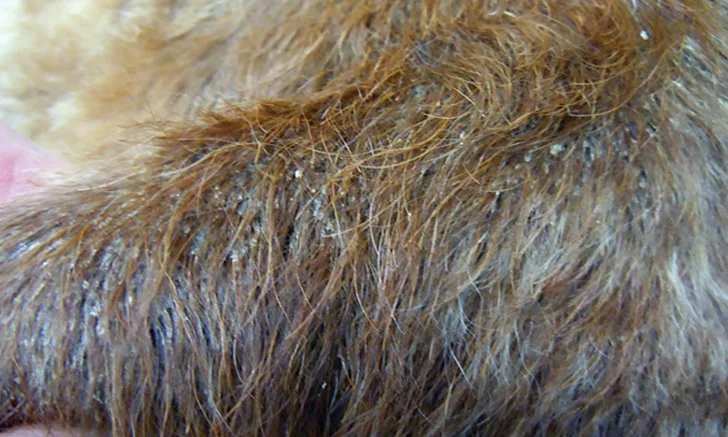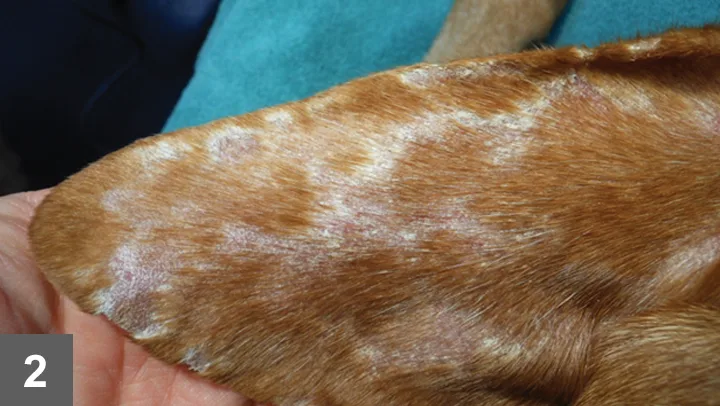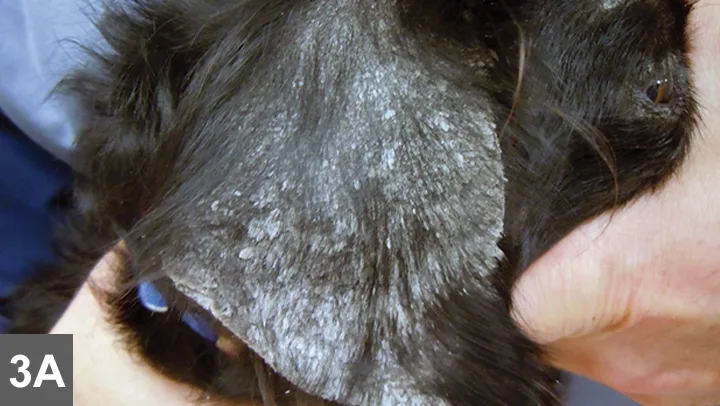Canine Sebaceous Adenitis
Alexander Werner Resnick, VMD, DACVD, Animal Dermatology Center

Sebaceous adenitis (SA) is an inflammatory disorder that causes immune-mediated destruction of the sebaceous glands. The pathogenesis is likely multifactorial; however, an autosomal recessive mode of inheritance has been proposed for the standard poodle and Akita.
Related Article: Canine Scaling Disorders
Several distinct presentations are recognized, although the hallmark clinical sign is adherent crusting of hair shafts with follicular casts (ie, keratin collaring) (See Figure 1 above, Labradoodle with adherent crusts (ie, keratin collaring) on hair shafts. The long, curly hair coat has become straight and brittle). Because several diseases can appear clinically similar to SA, it can only be definitively diagnosed by biopsy.
Multiple circular lesions with fine silvery scales on the pinna of a vizsla.

Long-coated breeds typically develop lesions first on the dorsal muzzle and temporal region. Over time, lesions can progress to the body (primarily dorsally and bilaterally symmetrical) and tail. The hair coat often becomes straighter and more brittle. In the Akita, signs can rapidly generalize, with more severe lesions of secondary pyoderma potentially causing pruritus and systemic illness that can lead to increased morbidity.
Related Article: Acute Onset of Alopecia & Erythematous Dermatitis in a Vizsla
Short-coated breeds, typified by the vizsla and dachshund, can develop discrete circular patches or plaques with alopecia and adherent fine scale (Figure 2).
Lesions primarily develop on the body, face, and pinnae (Figure 3).

Pinna of a crossbreed dog before (A) diagnosis of SA and after (B) 6 months of therapy. There are significantly fewer adherent crusts and evident hair regrowth following treatment.
Multiple treatment options for SA are available, including a recent focus on cyclosporine A. A partly blinded, placebo-controlled study comparing cyclosporine A at 5 mg/kg PO q24h and topical therapy (ie, antiseborrheic topical therapy and frequent bathing) established that both treatment modalities were effective individually, but a synergistic effect was noted when used concurrently.1 Control of SA requires lifelong therapy.